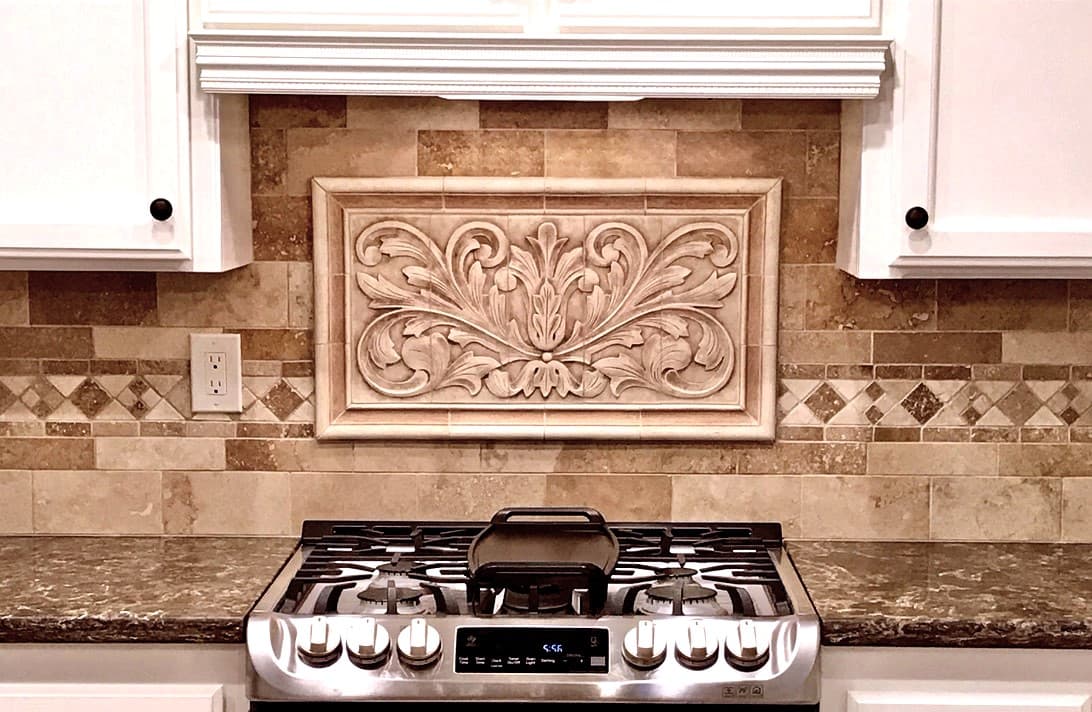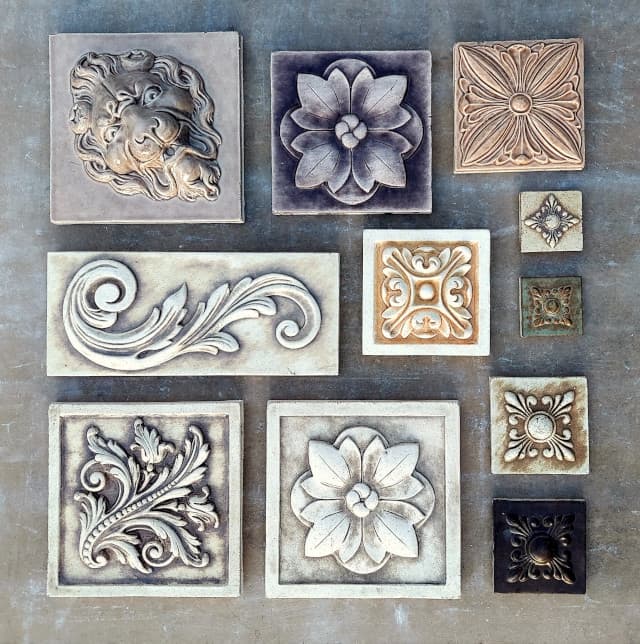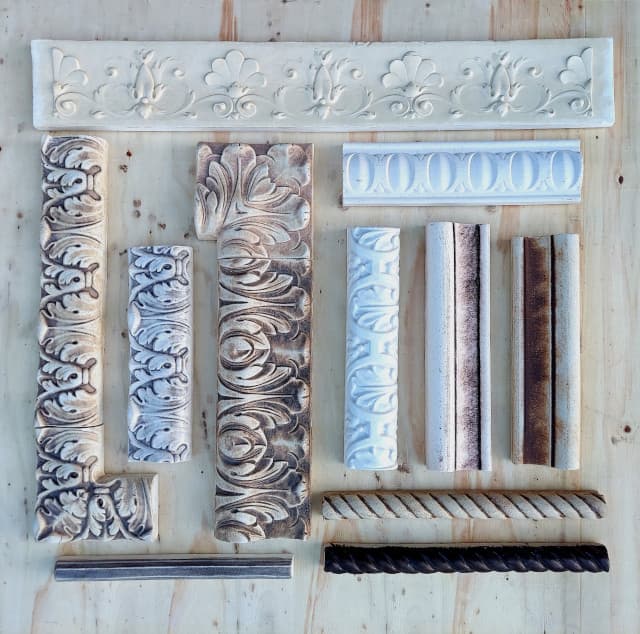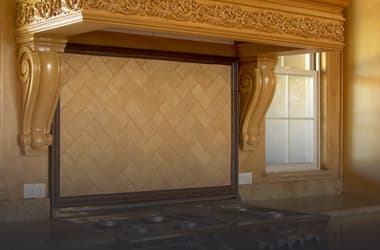
Tile Relief Murals: A Journey from Ancient Civilizations to Modern Times
Recent Posts
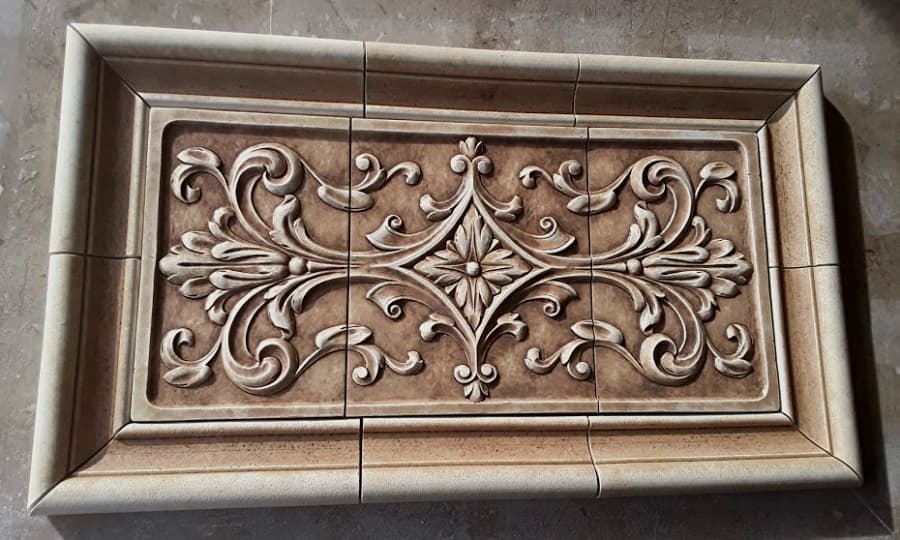
Relief Tiles Storytelling Through Texture and Form
MAY 3, 2025

Andersen Ceramics: Meet The Maker
MAY 2, 2025
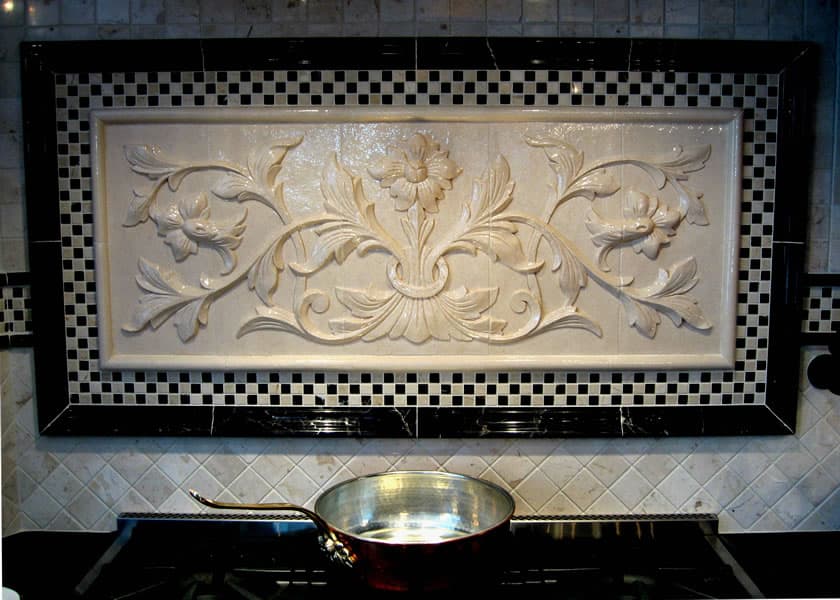
Textured Ceramic Tile Backsplashes: Adding Depth and Dimension
MARCH 22, 2025
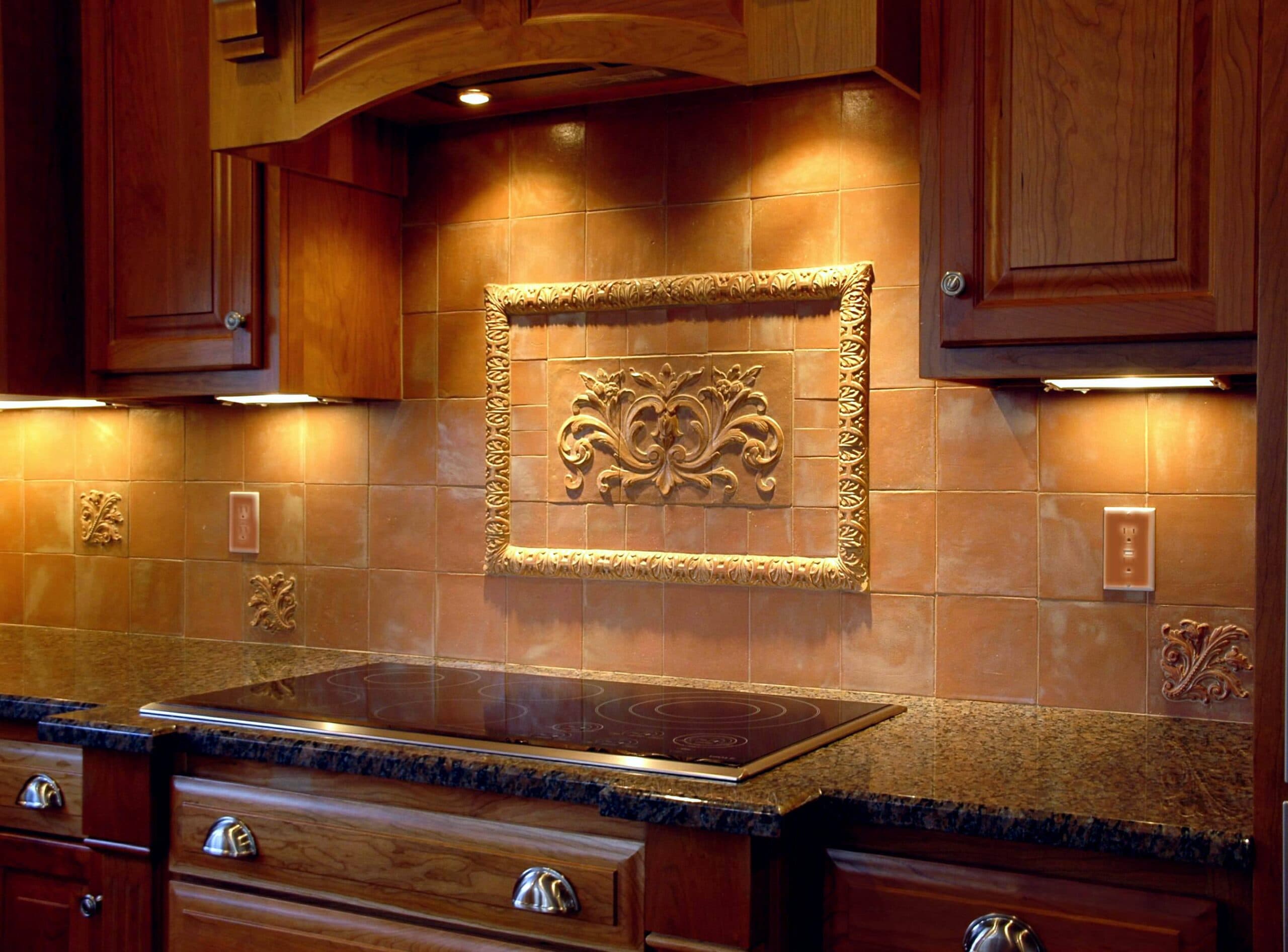
Backsplash Tile Designs That Increase Home Value
MARCH 19, 2025

High Fire Glazes in Contemporary Ceramics
FEBRUARY 21, 2025
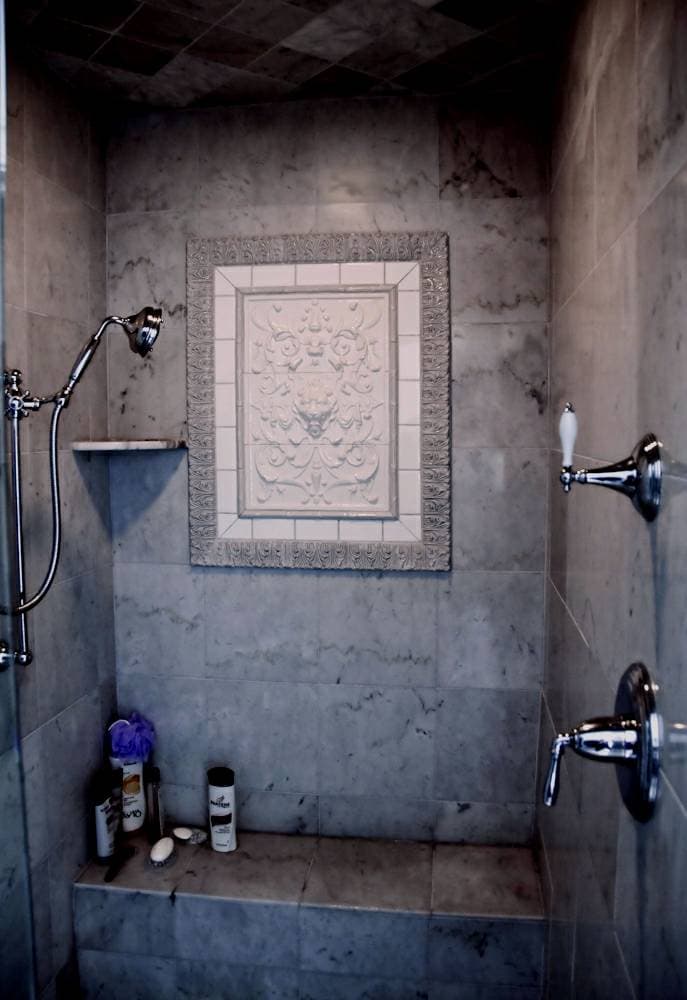
Incorporating Relief Tiles into Your Bathroom Design
FEBRUARY 21, 2025

OCTOBER 11, 2024
Tile Relief Murals: A Journey from Ancient Civilizations to Modern Times
Tile relief murals are a timeless art form, with intricate designs and captivating stories carved into the very fabric of human history. From ancient to modern times, these murals have evolved in technique and artistic expression, becoming a powerful medium for storytelling, cultural preservation, and aesthetic beauty. This blog will explore the origins of tile relief murals, their significance across different eras, and how this ancient tradition inspires today’s artists.
Early Beginnings: Tile Relief Murals in Ancient Civilizations
Tile relief murals have their roots in the earliest human settlements, where societies sought ways to beautify their surroundings and communicate through art. While the exact origins are difficult to pinpoint, evidence of early tile murals can be traced back to ancient Mesopotamia, one of the world’s first advanced civilizations. Here, artisans began creating glazed tiles adorned with relief sculptures depicting religious symbols, mythological figures, and scenes of daily life.
The Babylonians, for instance, are known for their famous Ishtar Gate, built around 575 BCE. This monumental gate was adorned with colorful glazed brick reliefs of lions, dragons, and bulls, symbolizing the might of their empire. These intricate tile reliefs were not just decorative; they also served a symbolic and ceremonial purpose, connecting the physical world with the divine.
Similarly, ancient Egyptian temples and tombs were often decorated with tile reliefs celebrating the afterlife. Artists carved scenes of gods, pharaohs, and natural landscapes into tiles made from clay or stone, bringing their religious beliefs to life through detailed and durable visual storytelling.
Tile Murals in the Classical World
As tile-making techniques spread across the Mediterranean, tile relief murals became prominent in Greek and Roman art. The Greeks, known for their mastery of sculpture and pottery, applied these skills to create terracotta tiles that adorned temples and public spaces. Often, their reliefs depicted mythological stories and scenes from daily life, celebrating their gods and heroes in a visually striking way.
The Romans took this art form to new heights, utilizing advanced engineering and material techniques to produce larger and more intricate tile relief murals. Roman villas and public baths often featured these murals, crafted from marble or terracotta, illustrating everything from pastoral landscapes to epic battles. The Roman use of tile reliefs in public spaces further cemented their role in architecture and culture, showcasing beauty, power, and prestige.
The Influence of Islamic Art and Architecture
Tile relief murals reached new levels of sophistication during the Islamic Golden Age. Islamic art, emphasizing geometric patterns, calligraphy, and arabesque designs, used tilework as a primary medium for architectural decoration. This period saw the rise of intricate tile reliefs in mosques, palaces, and public buildings, where they enhanced the structures’ beauty and conveyed spiritual messages.
The Alhambra in Spain, built during the Nasrid Dynasty, is one of the finest examples of Islamic tile relief murals. Its walls are adorned with breathtakingly intricate tilework that blends mathematical precision with artistic flair. These tiles, often arranged in geometric patterns or with Quranic inscriptions, served decorative and educational purposes.
Creating these murals involved crafting tiles in various shapes, often using a form of stucco to create relief patterns before firing and glazing the tiles. The result was a vibrant, detailed mural that could withstand the test of time.
The Renaissance and the Revival of Tile Murals
During the Renaissance, the use of tile relief murals experienced a revival in Europe. Artists and architects began incorporating them into public and private buildings, drawing inspiration from the classical world while introducing new techniques. Italian maiolica tiles, known for their colorful glazes and intricate relief patterns, became especially popular during this period.
In addition to being decorative, tile relief murals during the Renaissance often told religious or historical stories. Churches and cathedrals featured murals depicting scenes from the Bible or the lives of saints, reinforcing their spiritual significance while also showcasing the artists’ technical skills.
The Renaissance also shifted towards more realistic and three-dimensional reliefs, with artists focusing on shading and perspective to bring their scenes to life. This period laid the groundwork for modern tile murals, where artistic expression and technical innovation combined to create truly breathtaking works of art.
Modern Tile Relief Murals: From Tradition to Innovation
In the 20th century, tile relief murals experienced yet another transformation as artists experimented with new materials and techniques. At the same time, traditional clay and ceramic tiles remained popular. Innovations such as concrete and metal tiles opened up new possibilities for large-scale murals.
The Mexican Muralist movement, led by artists such as Diego Rivera, again brought tile relief murals into the spotlight. Rivera’s large public murals, many of which incorporated relief elements, became powerful tools for political and social commentary. These murals, often found in public buildings and plazas, drew on the ancient traditions of relief art while addressing contemporary issues.
Today, tile relief murals are used in various contexts, from public art installations to interior design. Contemporary artists continue to push the boundaries of the medium, incorporating digital design and 3D printing into their work while still drawing inspiration from the ancient civilizations that first pioneered this art form.
The Art of Creating Tile Relief Murals: Techniques and Materials
Creating tile relief murals has evolved throughout history, but the basic principles have remained the same. Artisans begin by molding tiles from clay, stone, or other materials, often using a form of carving or sculpting to create the desired relief patterns. Once the design is complete, the tiles are fired in a kiln to harden them, and they may be glazed to add color and durability.
Glazing, in particular, has played a crucial role in developing tile relief murals. Ancient artisans discovered that applying a glaze to their tiles enhanced their aesthetic appeal and made them more resistant to weathering. Over time, glazing techniques became more advanced, allowing for greater color variety and intricate patterns.
Today, relief murals can be found in homes, businesses, and public spaces worldwide. Whether made from traditional ceramic tiles or modern materials, they continue to captivate with their combination of artistic expression and craftsmanship.
Conclusion
From the ancient walls of Babylon to the vibrant public spaces of today, tile relief murals have stood the test of time as both an artistic and functional medium. They connect us to the past as a form of storytelling, while their beauty and craftsmanship inspire new generations of artists. Though the techniques and materials may have evolved, the enduring appeal of tile relief murals remains unchanged, a testament to their place in human culture and history.

